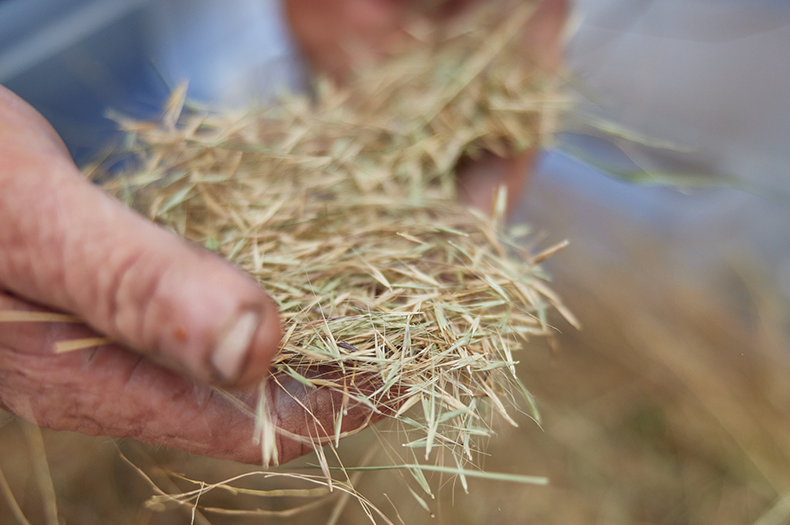July 16th, 2023Growing best practice in native seed production

A research project led by Greening Australia and funded by The Ian Potter Foundation is set to significantly expand the national native seed sector’s practical knowledge on how to establish and manage effective, climate-ready seed production areas (or SPAs, as they are known in the industry).
The project comes at a crucial time, as shortages in native seed significantly hamper Australia’s efforts to address biodiversity loss and climate change through ecosystem restoration.
The authors of Australia’s first national native seed strategy, released in 2021, acknowledged that wild collection of native seed would not be able to meet the increasing need for seed. They recommended establishing SPAs to help fill the growing gap between supply and demand.

Most of Australia’s native seed supply comes from wild harvest. However demand is outstripping sustainable collection limits. Photo: Jesse Collins.
A snapshot of seed production in 2021 found that only a very small proportion of the native seed sector is working to establish and develop SPAs. Factors driving the low uptake include a lack of resources, and lack of confidence in how to establish a SPA to produce healthy, high quality and genetically diverse seed.
“Establishing an effective SPA can be very complex, as it involves understanding genetics, ecology (e.g. pollinators), horticulture and plant ecophysiology,” said Melinda Pickup, Manager of Seed Science at Greening Australia.
“So we need practical research and development to help ensure that the planning, establishment and ongoing operations of SPAs will contribute to, and be based on, the best available science for restoration in a changing climate. That, in turn, will guarantee the seed produced is resilient and healthy in future climates.”

Seed production areas could support restoration in a changing climate by producing high quantities and qualities of native seed. Photo: Toby Peet.
With its current investment in SPAs, Greening Australia is in a unique position to provide a live testing and training ground, bringing together key skilled collaborators and research partners to plug core practical knowledge gaps in all aspects of SPA development and how this relates to on-ground restoration.
The five-year project has several objectives, including:
- Developing science-led seed quality assurance and control frameworks for SPA-produced seed to provide certainty on its quality
- Developing resources to help standardise and guide SPA development to improve the likelihood of success and the production of genetically healthy seed appropriate for changing climates
- Developing and testing seed treatments to increase germination and establishment success
- Researching how to optimise production and seed yields through horticultural practices and create optimum environments for pollination.

Research and development is needed to increase practitioner and investor confidence in establishing SPAs and to improve seed supply for restoration. Photo: Toby Peet.
Insights from this project will be shared across the whole native seed sector to help make developing and managing SPAs less complex and more accessible for practitioners, ultimately improving seed supply and science-led restoration outcomes in a changing climate.










